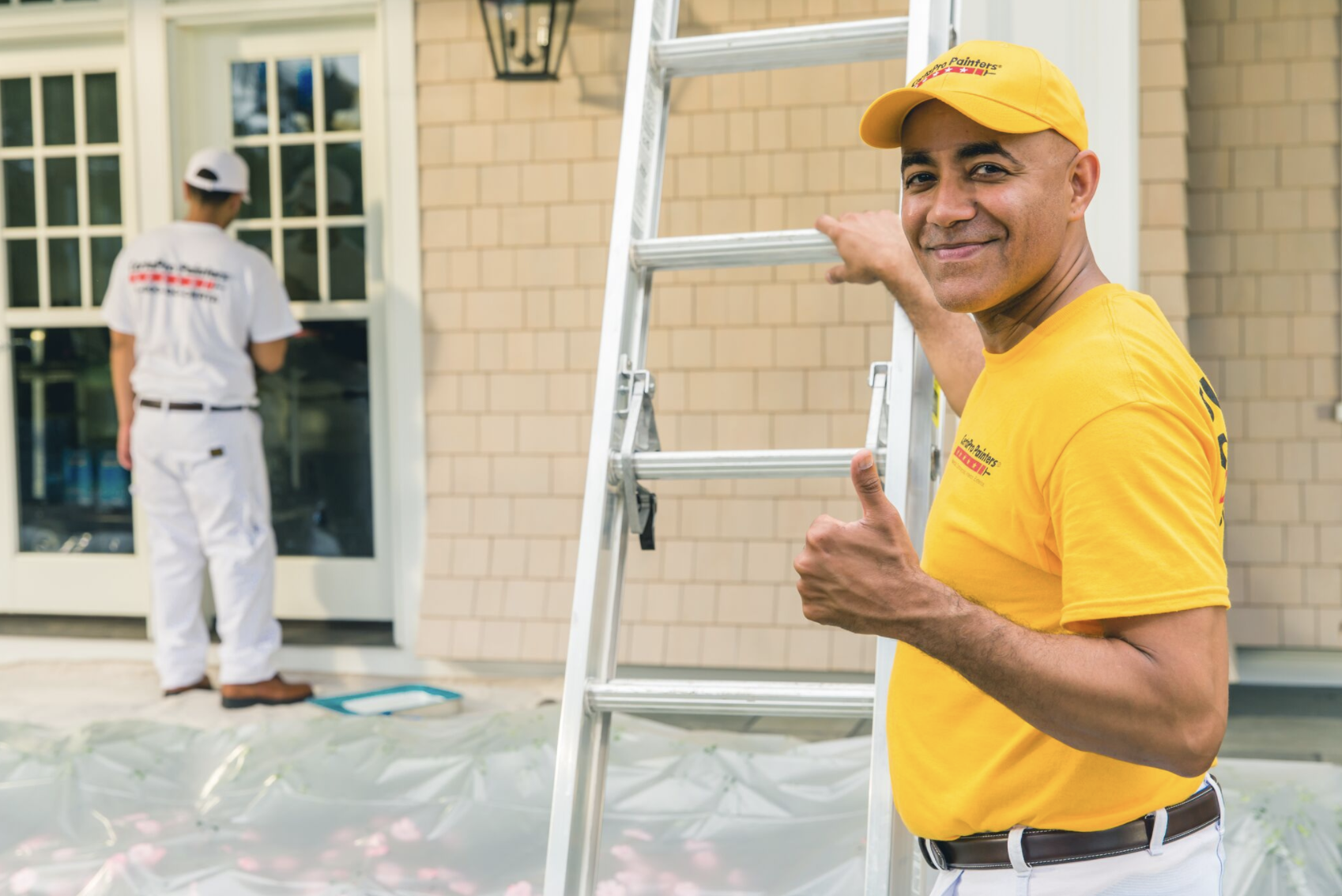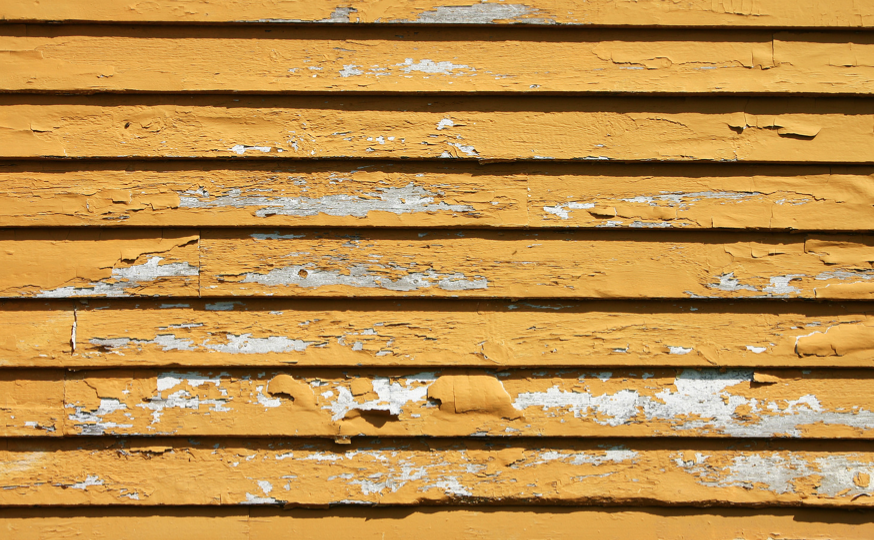Frequently Asked Questions about exterior painting.
Chapter 8
Chapter 8: Commonly Asked Questions
 Now that you’ve educated yourself about exterior painting on the South Shore and Boston region, you’re ready to:
Now that you’ve educated yourself about exterior painting on the South Shore and Boston region, you’re ready to:
Print off a handy PDF of this whole guide so you can refer to our checklist and tips throughout the process of hiring a commercial painting contractor.
Some commonly asked questions:
Should I use latex or oil paint on my South Shore home’s exterior?
The United States government has steadily phased out the chemicals that make oil paint so durable while at the same time, latex paint has improved dramatically. On the South Shore we use latex paint for most exterior projects. If your home was previously painted with oil paint, it is no problem at all to coat it now with latex paint.
How to tell which kind of paint, latex, or oil, my home currently has:
Rubbing alcohol: Use rubbing alcohol in an inconspicuous spot – if the paint comes off, it’s latex, if it doesn’t it’s oil.
Brushstrokes: If you see brush strokes, generally you have latex paint. This is not a hard and fast rule because if the latex paint was sprayed on your exterior, you may not see brush strokes at all.
Do I need to remove 100% of the old paint on my exterior before re-painting it?
In general, no, you only need to remove the loose, peeling, and unstable paint before repainting over the old paint. This is done in the preparation phase with a paint scraper and then sandpaper to smooth the hard edges of the paint. Before painting the topcoat, any bare wood exposed by the scraping process should at least be cleaned and primed in that area. Sometimes the paint on your home is so old it requires a full prime before painting a topcoat.
Old paint adds to the unpredictability of the paint job, so the more paint that’s removed in the preparation phase, the more predictably the new paint will adhere and last. This is why a paint job on never-coated wood will usually last longer than a paint job on wood that’s been coated many times. However, since stripping a home 100% of its old paint is quite expensive, it’s acceptable to remove only the clearly unstable old paint without removing all of it.
What’s the purpose of primer on an exterior painting project?
A primer is used to help prepare your home to accept the topcoats of paint and solves a few of the challenges, such as:
- Helping to seal out moisture.
- Help to resist and minimize bleeding common in cedarwood, wood with lots of knots or for covering the rust on nails used to build your home.
- Locking down the chalky surface of the old paint.

Do I need a full prime coat on my home’s exterior?
In general – a home that’s been previously painted should at least be primed in areas where bare wood is showing.
When to do a full prime on your South Shore exterior:
- When the paint is very old and unstable.
- When the wood or substrate of the home is brand new and untreated (bare wood). Note: When priming a new piece of wood, prime all six sides of the wood, including cut ends, so the wood lasts longer.
- When doing an “extreme” color change to your home (going from light to dark, or dark to light) you’ll need a primer and multiple coats of the new color paint.
How many topcoats of paint do I need on my exterior?
If you are not changing colors, a single coat of exterior paint may suffice. If you are changing colors, you often need at least two coats of the new color, especially if you are changing from a very light color to a very dark one (or vice versa).
If you are selling your home, it’s often the least expensive to paint a single coat of paint in the same color to freshen up your exterior before it goes on the market.
How long will an exterior paint job last on the South Shore?
Cedar siding or shingles: Generally require re-coating every 5-7 years.
Stucco & cement homes: Generally require re-coating every 8-10 years.
Vinyl or aluminum siding: Can be painted, but is not required for maintenance, only if you want to change the color or freshen up the appearance.
Deck & porch floorboards: Generally need recoating with stain every 2 years because they are exposed to hot sun, foot traffic, and water puddling, which wears away the stain on the horizontal surface.

Is it better to spray a home or hand brush it?
Either spraying or rolling is an acceptable application method as long as the paint is applied to your exterior using the correct “spread rate.” This refers to how much square footage is covered per gallon of paint. When spraying, have your South Shore painter back-roll the paint. This “pushes” the paint into your wood siding by rolling it in place.
In either case, spray or hand brushing and rolling paint needs to be applied according to the manufacturer’s directions.
What is the best paint brand to paint my home’s exterior?
In general, more expensive paints contain more durable pigments (color) and resin which give you a better quality exterior finish. Because labor comprises about 85% of a painting quote, if you want to save money, it’s worth it to buy paints that will last longer.
What if I have lead paint on my home’s exterior?
If your home was built before 1978, it’s possible that the exterior contains lead paint. In this case, by law, you need a lead-certified painting company to prepare and paint your home so your family and the painters stay safe during the process.
Click here to set up a time to have CertaPro give you a free quote. If you’d rather call us to set a time, our phone number is 781-585-7246.
If you have any more questions regarding exterior painting, even if you’re doing the project with another contractor or doing it yourself, feel free to reach out to CertaPro Painters today!
You also might like to read:
Our exterior painting portfolio of recent projects
Staining vs. painting your exterior
Historical colors to use on your exterior in the Boston area


